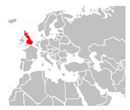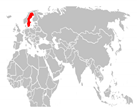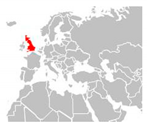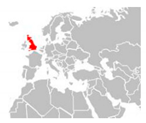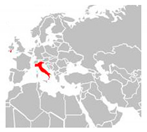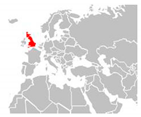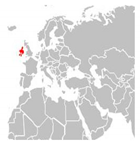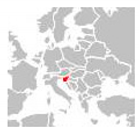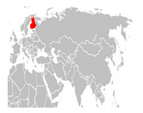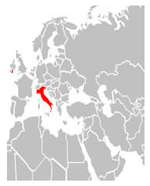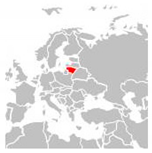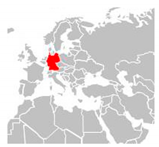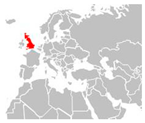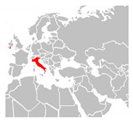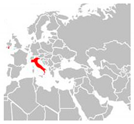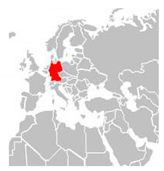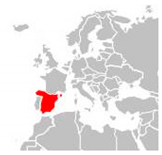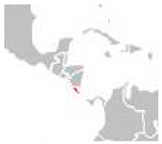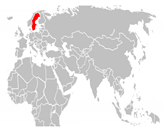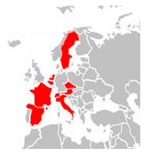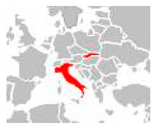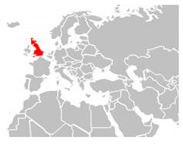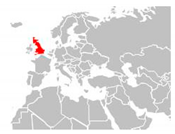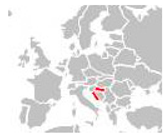Abstract
A wide range of climate change mitigation policies have been developed around the world and these policies have become one of the major concerns, however there is still debate among scientists about what are the main external benefits and how to account for them and prepare effective climate change mitigation policies that might be widely accepted by society in general. One of the main ways to assess external benefit of climate change mitigation in energy sector is to conduct Willingness to Pay (WTP) assessments for climate change mitigation options by households. There are many studies on WTP assessment for climate stability conducted in recent years. The paper surveys the existing literature on WTP for climate change mitigation policy in the energy sector. The aim of the paper is to identify the common variables across a varied set of WTP studies in order to establish a basis for comparison. The key variables selected for analysis of WTP studies for climate change mitigation in energy sector addressed in the paper are: the WTP assessment methods; the main attributes used for comparing alternatives in WTP studies, targeted climate change mitigation policies in energy sector, mathematical model used to estimate WTP, the main socio-demographic factors having impact on WTP for climate change mitigation policies. The analysis of WTP studies for climate change mitigation is grouped in two areas: renewables and energy efficiency measures in households. The paper provides analytical structure for future studies to evaluate the effects of variation in key comparative elements upon WTP.
1. Introduction
Climate change mitigation policies are the main global environmental policies being implemented in energy policy since the signature of Kyoto Protocol in 2007. These policies provide external benefits and it is necessary to assess them in order to justify climate change mitigation actions and various support measures being provided for the main climate change mitigation actions in the energy sector. These main climate change mitigation actions consist of policies to promote renewable energy sources and measures to increase energy efficiency.
In order to assess climate change mitigation external benefits, it is possible to use several methods, like assessment of external costs of climate change and associated avoided damages due to climate change mitigation actions. However, assessment of the external costs of climate change is a complicated issue due to the wide range of uncertainties related to climate change costs. Usually integrated assessment models, which combine a physical climate model with an economic growth model, estimate the avoided future climate damages from climate change policies. These models have been widely used to determine the benefits of climate policy and by comparing marginal benefits with marginal costs—socially optimal levels of expenditure on climate stabilizing measures [1]. This approach requires assumptions about future population growth, economic activity and technology and linking GHG emissions with their effects on climate [2]. An alternative method for estimating benefits is to elicit individuals’ assessments of these benefits.
Economists and policy analysts exploit a variety of methods to estimate consumer willingness to pay (WTP) for climate change mitigation. However, the results of these studies and assessed WTP vary due to the difference in conditions under which researchers perform them. There are several meta- analysis and review studies conducted recently trying to address the heterogeneity issue and provide some recommendations and policy guidance [1,2,3,4,5,6,7,8,9,10], however these studies do not provide clear policy guidance for the main drivers of WTP for climate change mitigation in energy sector.
The applications of behavioral science related to the 20th and 21st centuries are often interrelated with (re)emergence and phasing out of certain phenomena. In this context, substantial attention should be paid to such issues as “consciousness, including the concept itself and consciousness in nonhuman animals; the method of introspection; and cognition, including the interpretation of mental imagery and the role of language in thinking” [11]. The emergence of the phenomena is related to emergence of new theories and methodological advancements [12]. The motivation for review on the WTP analysis is closely linked to movements within civic society, known as social campaigns. The concept of vici society was used in the context of politics and economics when referring to “non-state movements that were defying authoritarian regimes, especially in central and Eastern Europe” [12,13,14]. Indeed, reinvigorated civic society can exert decisive influence upon the government bodies [15,16]. Looking in a paradigmatic way, this refers to the bottom-up approach [17,18,19,20]. Therefore, the case of actions for climate change mitigations and their manifestations in WTP comprise an interesting example of a process which has been going on across different parts of the since the Kyoto Protocol in 2007.
Johnson and Nemet [1] analyzed 27 studies on assessment of WTP for climate stability. They recalculated WTP estimates on an equivalent basis across 27 studies and found a range for WTP of $22-$437/household annually, with a median of $135. Discrepancies among estimates obtained from American, Asian, and European samples enabled authors to draw conclusions on the effects of nationality on WTP for climate stability. The common explanatory variables in WTP surveys are environmental attitudes and beliefs, income, education, gender and political views. There are many valuation methods and survey types however, the great majority of studies has applied a contingent valuation methods.
Tol [3] reviewed 585 WTP studies on climate change mitigation policies, and concluded that the amount of money that people appear to be prepared to pay for carbon taxes is in line with its estimates based on the other approaches: The WTP per metric ton of CO2 emissions reductions from WTP studies ranged from a few to a few thousand dollars per ton.
Allo and Loureiro [4] analysed through meta-regression the existing literature (58 studies from around the world) regarding preferences and WTP for climate change mitigation and adaptation policies and defined that climate change mitigation actions are preferred over adaptation and economic development level of the country where study is conducted had impact on WTP showing that developing countries are less willing to pay for climate change mitigation policies. The impact of cultural differences has been found having impact of WTP for climate change mitigation.
Ma et al. [5] conducted meta-regression analysis to assess what are the main drivers of WTP for renewable energy estimates in 28 empirical studies: social-economic differences across the population or study design and found that characteristics of study design was more important. Soon and Ahmad [6] conducted random-effect meta-analyses of 30 studies and calculated a summary WTP for renewable energy use estimate from all estimates (7.16 USD) and tried to explain the determinants of variations of WTP for renewable energy usage. Study found that metropolitan residents and North American households have higher WTP than rural and Asian households. The types of renewable energy resources (RES) didn’t have impact on WTP estimates. Sundt and Rehdanze [7] conducted meta-regression on valuation of consumer preferences for a larger share of renewable energy in their electricity mix and revealed a number of important factors that explain the differences in WTP values for renewable energy: different valuation methods, green electricity sources, individual and household characteristics as well as information on the type of power plant that will be replaced by renewables. Bigerna and Polinori [8] conducted meta-analysis of WTP for renewable energy studies and confirmed that the local community plays a central role in local renewable energy projects acceptance. Furthermore, people who have previous experience with windmills require less compensation, or are willing to pay more, for renewable energy development. Results suggest that these attributes should be included in future research to improve understanding of determinants of renewable energy acceptance and WTP for renewable energy use.
Fizaine et al. [9] provided an analysis of the literature on WTP for green buildings and energy efficiency measures in buildings by conducting a meta-analysis of more than 50 studies from around the world. The average estimation of the price premium accepted by economic agents (in terms of sale prices) in order to enjoy energy efficient and sustainable buildings was derived. It is likely to fall within the range of 3.5–4.5% of the price, which is half of the original estimation made with no correction for publication bias. Considering the great heterogeneity remaining, authors have also explored several potential moderators in order to explain the spread of the results.
Alberini et al. [2] compared the results of a stated preference study on WTP for climate change mitigation in Italy and the Czech Republic with the results of previously conducted stated preference studies on WTP for climate change mitigation and found considerable heterogeneity in WTP driven by income. Alberini et al. [10] analysed how the willingness to pay (WTP) for each ton of CO2 emission reductions depend on the policies and on individual characteristics of the respondents and how extensive is the variation associated with these factors. Alberini et al. [10] found that variation associated with the policy instrument is approximately of the same order of magnitude as that associated with individual characteristics of the respondents.
Though in the recent years many studies have been done in order to investigate the consumer preferences and their WTP for climate change mitigation in the energy sector, but in spite of all the available information from these studies regarding the consumer’s attitude towards climate stability, it is very difficult for policy makers at the higher level to get an overall understanding of the consumer’s behavior. To analyze this behavior, it is very important to find the exact explanatory variables which clearly reflects the consumer’s attitude and the range of individual values for a specific study sites and the climate change mitigation options.
This paper attempts to survey the existing literature on WTP for climate change mitigation policy in the energy sector. It does this by identifying common variables across a varied set of WTP studies in order to establish a basis for comparison. The key variables selected for analysis of WTP studies for climate change mitigation in energy sector are: the WTP assessment methods; the main attributes used for comparing alternatives in WTP studies, targeted climate change mitigation policies in energy sector, mathematical model used to estimate WTP, the main socio-demographic factors having impact on WTP for climate change mitigation policies. This allows to provide analytical structure for future studies to evaluate the effects of variation in key comparative elements upon WTP.
The principles of the Triangulation 2.0 approach were followed in this study. The latter approach is appealing in that it seeks for fusion of both qualitative and quantitative data and tools. Given the difficulties in capturing and reflecting the objective reality, the use of a plethora of methods—triangulation—appears as an exit from biased analysis. Thus, triangulation attempts to disentangle the phenomenon in question by considering its representations in a multi-faceted manner. In this sense, triangulation can be considered as an alternative to validation. The transition towards postmodern society fueled appearance of a perception of triangulation as a kind of multigenre crystallization. Crystallization involves different forms of analysis and genres of representation when dealing with complex issues represented by a coherent text. A polyhedral and solid interpretation is rendered by following this approach [21]. These issues are particularly important for policy analysis. As this review deals with WTP for climate change mitigation measures and policies, the hybrid analysis required. Specifically, dialogical research involving methods from qualitative and quantitative domains along with inclusion of stakeholders can render effective solutions accounting for the needs of different social strata [22,23]. Accordingly, personal characteristics need to be accounted for and involved into modelling activities when devising tailored policies [23].
This approach allows to identify and summarize the results of WTP assessment obtained across different countries. This, in turn, leads to identification of the main drivers of these results. The main paper addresses the following questions:
- What are the main methods applied for assessment of WTP for climate change mitigation across different countries?
- What are the main drivers of WTP for climate change mitigation in different countries?
- What kind of policy measures can be applied to increase WTP for climate change mitigation?
The main objective of this study is to present an overview of the past and current status of paying behaviors by consumers through an effective discussion from economic, ecologic and historic studies and derive the main drivers of paying behaviors and elicit policies to enhance such behavior. This allows better understanding and comparing the main drivers of WTP for climate change mitigation and necessary climate change mitigation actions the global climate change mitigation context. As a result, models for specific countries can be outlined by selecting appropriate WTP assessment methods, attributes and drivers of WTP for climate change mitigation. In particular, developing questionnaires for specific WTP assessment study in selected countries can rely on results of the present survey.
The structure of paper can be summarized as follows: Section 2 briefly describes the applied methodology. Section 3 provides the key theoretical issues linked to assessment of willingness to pay for climate change mitigation. Section 4 provides the analysis of main methods used for assessment of WTP. Section 5 deals with empirical studies on assessment of WTP for renewable energy sources and synthesis of the main WTP assessment methods, attributes and the main socio-demographic factors having impact on WTP for renewable energy sources. Section 6 deals with analysis of studies for assessment of WTP for energy efficiency measures and provides the summary of the main WTP assessment methods, attributes and the main socio-demographic factors having impact on WTP for energy efficiency measures. Section 7 presents the discussion and overview of WTP estimates and their main drivers across studies following by conclusions and recommendations for future research.
2. Methods
The critical review of recent scientific literature in the field of WTP for climate change mitigation in energy sector is the main method applied in this review paper. The applied method in this paper consist of the following steps (Figure 1): Presentation of the theoretical background for assessment of WTP for climate change mitigation and identification of the main WTP assessment methods; Analysis of and synthesis of WTP assessment methods, attributes and the main socio-demographic factors having impact on WTP for energy efficiency measures; Analysis of and synthesis of WTP assessment methods, attributes and the main socio-demographic factors having impact on WTP for renewable energy sources; Development of policy implications; Recommendations for future research.

Figure 1.
The main steps of implemented methodology.
3. The Background for Assessment of Willingness to Pay for Climate Change Mitigation
Economic valuation provides means for measuring external benefits of climate change mitigation actions, and does this by assigning monetary values to the full range of goods and services provided by these actions, whether or not market prices are available. Therefore, economic valuation is a background for justifying and promoting climate change mitigation activities and developing effective policy tools [24,25]. The important terms such as behavioral transformation strategies, socio-demographic factors, social benefits, renewable energy sources, energy efficiency measures first need to be defined in order to define willingness to pay concept.
Behavioral economics allows one to uncover and interpret the psychological, social, and emotional drivers of customer’s decisions and their behaviors and to apply them in shaping policies and measures and developing strategies aiming at customer’s behavior changes in desired directions [26]. Socio-demographic factors or characteristics include, for example, age, sex, education, migration background and ethnicity, religious affiliation, marital status, household, employment, and income. Different index variables are formed on the basis of socio-demographic variables. They include, for example, socio-economic status, which combines information on education and income [17]. Social benefits of climate change mitigation are additional co-benefits of climate change mitigation. They can provide other environmental benefits such as increase in air quality, public health, agricultural yields, increase in usage of renewable energy and increase in energy efficiency, long-term economic growth, increase in industrial competitiveness and income equality [18,19,20].
Renewables y is energy that is collected from renewable resources, which are naturally replenished but flow-limited. The main renewable energy sources are: biomass, hydropower, geothermal, wind, solar, etc. [20]. Energy efficiency measures are applied to ensure energy savings in energy supply, generation and consumption. They aim to decrease the amount of energy needed to provide the same level of comfort or utility. Renewables and energy efficiency measures are the main ways of climate change mitigation in energy sector [20].
There are several economic valuation methods to assess climate change mitigation benefits. On the basis of approach applied to monetise benefits, economic valuation methods can be divided in three main categories: direct market valuation techniques, non-market valuation techniques and benefit transfer [27,28,29,30,31].
Direct market valuation methods monetise benefits on the basis of production or cost data therefore they are applied for the goods and services for which market exists. There are three main approaches of direct valuation: market prices, costs and production functions. Non-market valuation methods are applied to monetise goods for which there are no markets. There are three main approaches for non-market valuation of goods and services: stated preference methods, revealed preference methods and conjoint analysis. The benefit transfer methods are being applied then the results from related studies are being transferred from one site to another by modifying them based on GDP per capita adjusted at PPP or average income of population etc.
Economic valuation tools can be applied for assessment of range of benefits associated climate change mitigation actions. The economic evaluation also allows to reveal an ancillary benefits of climate change mitigation such has reduced local air pollution or employment creation though the primary target is greenhouse gas (GHG) emission reduction.
Avoided external costs of climate change due to implemented climate change mitigation policies are usually being assessed by scientists through Integrated assessment models, which combine a physical climate model with an economic growth model, estimate the avoided future climate damages from climate change policies. These models have been widely used to determine the benefits of climate policy and— by comparing marginal benefits with marginal costs—socially optimal levels of expenditure on climate stabilizing measures. An alternative method for estimating benefits is to elicit individuals’ assessments of these benefits. Determining benefits in this way is challenging, given the complex nature of global climate change as both a physical and psychosocial phenomenon. Economists, political scientists, and policy analysts have begun to address this challenge by using a variety of methods to estimate consumer WTP for enhanced climate stability [1].
Economists define the benefits of an environmental policy as the collective willingness to pay to preserve some environmental good [32]. Researchers typically gather data on WTP for environmental goods using one or more of the following methods: (1) garnering a dollar estimate on the basis of what others actually pay to access environmental goods (travel cost method); (2) determining price differences across otherwise similar assets that vary only in their access to environmental goods (hedonic pricing); and contingent valuation methods (CVM), which use surveys to elicit willingness to pay associated with hypothetical scenarios [33]. Studies of WTP for climate stability almost always rely on the assessment of hypothetical scenarios, and are therefore suited to the CV method. Further, this method is particularly appropriate for our purposes because it captures both use and non-use value [32]. This is important, as the benefits of climate stability to voters in developed countries are predominantly of a theoretical, indirect, or aesthetic nature.
The shortcomings of using WTP for environmental valuation are significant and tend to reflect larger issues facing the application of cost-benefit analysis to environmental policy. For one, the vast uncertainty, long timescales, and social conflicts that characterize climate change make monetization of climate impacts extremely difficult [34]. Further, because climate impacts transcend international boundaries, comprehensive valuation must occur on a global scale. True valuation of climate stability also depends heavily on discount rates.
Research on the social and behavioral aspects of energy use indicates that higher income and pro-environmental lifestyles are related to higher levels of WTP for energy conservation equipment [35]. Feedback studies on household electricity use have found a significant negative effect of environmental awareness on energy consumption [36]. This effect was even greater for households with positive environmental attitudes.
The studies also highlight the importance of contextual differences in geography and local opportunities in explaining environmental behavior [37]. Demographic and generational transitions have been shown to explain variance in residential energy consumption [38]. Also driving household energy consumption are the varying psychological needs and dispositions associated with different generations, ethnicities, and socio-economic groups [39]. In addition, the American Psychological Association has recently identified a number of mental models that affect individuals’ understanding of and reactions to climate change [40]. For instance, framing a climate stabilizing measure in terms of its impact on weather may trigger a “weather” model that conjures a sense of chaos, helplessness, and resignation with regard to the proposed good. These insights provide a starting point for identifying probable explanations for variance in WTP estimates. The next section will explore apparent themes across a body of studies on WTP for These insights provide a starting point for identifying probable explanations for variance in WTP estimates. The next section will explore apparent themes across a body of studies on WTP for climate change mitigation conducted in recent years.
The great majority of studies on WTP for climate stability have been conducted within the past decade. The nascence of WTP methods of climate valuation and recent prominence of the climate change issue over the past decade allows for some uniformity in our sample of estimates. It also precludes the possibility of extensive time-series analysis. Further hindering identification of temporal trends, researchers have only very recently begun to explore the influence of certain key explanatory variables such as uncertainty of climate outcomes [41,42] and travel frequency [43] on WTP. The policy objects, or environmental goods, under valuation in WTP estimates vary extensively in various studies. The WTP studies on climate stabilisation vary from general studies of climate stabilisation [41], green energy investments [44,45,46], reductions of air temperature changes or increases in fossil fuel prices [42,47]. Some studies include specific carbon sequestration and climate mitigation mechanisms [43]. The most popular payment vehicles used for WTP assessment in various studies are taxes on income [48] and gasoline taxes [42], increased energy prices [49], and higher household costs generally [50]. Most studies applied contingent valuation (CV) model for assessment of WTP for climate stability [44] and extrapolation from public opinion polls [48]. Researchers employ a number of question types within the CV framework. Open-ended questions simply ask respondents to “name their price” for a particular climate stabilizing measure. Such questions often include payment cards, listing a range of possible prices [47]. More often, questions take the form of single, or multiple-bounded dichotomous choice variables that capture yes/no responses to a randomly selected WTP bid.
Significant explanatory variables in estimates of WTP for climate stability include gender [42], education [51], level of perceived responsibility [43], temperature increases [51], payment vehicle type [52,53,54,55], awareness of climate change impacts [54], respondent effort [49], and uncertainty of climate outcomes [41,50].
There are two main ways of climate change mitigation in households linked to energy consumption: energy efficiency improvement and use of renewables. The climate change mitigation measures applied by the government should be based on assessment of their social benefits therefore assessment of households willingness to pay for measures to increase energy efficiency or for specific energy efficiency improvements, such as energy saving equipment, renovation and insulation of buildings, modernization of heating and cooling systems and use of renewable energy. The assessment of WTP for micro-generation systems based on renewables would allow to assess the social benefit of these climate change mitigation measures and to develop appropriate policy tools for integration of social benefits of these technologies in their promotion schemes to ensure their faster penetration in the market.
4. Methods for Assessment of WTP for Climate Change Mitigation in Households
There are number of studies published over the last years focusing on consumers’ preferences towards renewables and energy efficiency improvements has increased steadily, thus resulting in a flood of data [53]. Furthermore, these studies vary widely not only in the energy-related characteristics they analyze and geographical location, but also different WTP valuation techniques employed (Figure 2) [21,53,54,55].
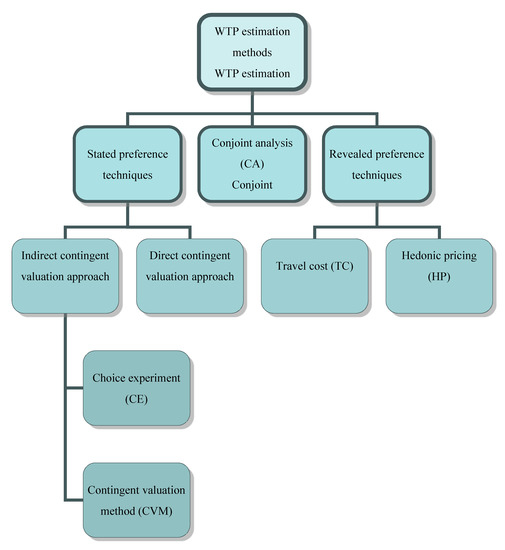
Figure 2.
Methods to assess WTP (Willingness to Pay). Source: Created by the authors.
Menegaki [54] has grouped all the studies of renewable energy evaluation into five main methods, depending on method applied: stated preference techniques, revealed preference techniques, financial option theory, emergy analysis and economic but not welfare-based oriented methods. Financial option theory—portfolio analysis valuates renewable energy projects based on their anticipated risks and anticipated returns. The main issue in portfolio analysis method is that this approach evaluates renewable energy projects not on the basis of their stand-alone cost, but on the basis of their overall portfolio cost including expected risks. Method of emergy analysis is used rather in economical engineering for determining net value of environmental projects to the society in general. And other economic but not welfare-based oriented methods are “various other economic methods and techniques which do not fall under above groups and are not welfare-based either” [54], whereas two first methods, stated and revealed preferences, are intended to assess willingness to pay for renewable energy and their technologies.
However, as can be seen in Figure 2, three principal techniques exist in the field of WTP valuation—Stated preference techniques, Revealed preference techniques and Conjoint analysis. Stated preference and Revealed preference techniques are based on Random utility theory. Only recently Louviere et al. [56] demonstrated that conjoint analysis (CA) doesn’t belong to Random utility theory and evolved out of the theory of “Conjoint measurement”, which is “purely mathematical and concerned with the behavior of number systems and not the behavior of humans”. Until that and sometimes nowadays, academics and practitioners seemed to have been confused regarding CA and CE methods and often considered CA as a special case of choice experiment (CE) (sometimes vice versa), which is considered as a Stated preference technique. Louviere et al. (2010) [56] suggested, while both of CE and CA methods use experimental design to assess WTP, however, one of the main differences is that CA “methods depend on orthogonal arrays of attribute level combinations as ways to sample profiles from full factorial arrays of attribute levels”, while Stated preference methods do not have this limitation.
Stated preference method, originated in mathematical psychology [57], is based on respondent’s choice from hypothetical choice set [58] or his direct answer, whereas information for the analysis of Revealed preference techniques is given out by markets, as produced by consumers’ actual decisions [54,59]. Revealed preference technique was introduced by Samuelson by applying this approach for assessment of impact of policies on households’ behavior [59]. Examples of these techniques are Travel cost and Hedonic pricing, which assume, preferences of consumers can be revealed by their purchasing behavior [54,59]. Other scientists [60] have suggested there might be more divided economic valuation methods into four groups, each with its own repertoire of associated measurement issues: direct market valuation, indirect market valuation, contingent valuation and group valuation.
One of the first applications of stated preference method can be obtained in study by Adamowicz et al. [58]. Scientists used a stated preference model and a Revealed preference model in their study while combining them both. The analysis showed that both, “hypothetical” Stated preference and “actual behavior” Revealed preference, techniques “provides evidence that the underlying preferences are in fact similar”. However, Banfi et al. [61] have noted that nevertheless the fact both Revealed and Stated preference methods are used to evaluate WTP, they preferred the Stated preference method, namely choice experiments, due to small size of energy-efficient houses’ market (thus revealed preference data is only scarcely available) and because the Stated preference method allowed for comparison of WTP of households which have already experienced the additional comfort benefits of energy-saving measures with those households which do not have such information. Other scientists support this idea as well. According to Claudy et al. [62], in theory either method could be used to estimate WTP, however, if target households surveyed group consists of a small number, it is very difficult to apply a revealed preference method, while stated preference methods, on the other hand, are more feasible in a case like that.
Based on arguments and critics provided in the literature [61,62] while comparing stated and revealed preference techniques it can be firmly said that stated preference techniques are more suitable for WTP for renewable energy resources for climate change mitigation measures (e.g., for the particularity of promotion of RES related to impact of global climate change) [63]. The revealed preference approach relies on a well-developed market for green energy. In addition, it rests on the preference set prevailing within a certain area. As a result, it ca be used for appraisal of pollution reduction and gains in environmental quality [63,64]. Given the climate change appears on a global scale, such techniques as travel cost and hedonic pricing are not able to capture the benefits of global climate change mitigation related to a particular area [63].
Stated preference techniques are based on the notion not only consumers are interested in energy—they are interested in the modes that energy is produced as well [59,65]. Two main methods of this technique were derived by Wood et al. [66]—direct and indirect contingent valuation methods. The direct contingent valuation approach is used while asking survey respondents outright how much value they place on a given good. However, scientists noticed, this form of questioning presents biases, as respondents may have an incentive to either over- or under-report their true WTP, depending on how the questions are worded. In order to assess respondents’ WTP while minimizing some of the above-mentioned biases, Wood et al. [66] propose to use an indirect approach. In their research, scientists stressed “indirect approach is more effective than asking direct WTP questions because goods or products are described as a collection of attributes and respondents must carefully weigh the trade-offs between attributes”. That way, they added, “because the product is not explicitly identified, and respondents are asked to state their preferences for attribute level, respondents’ incentive to over- or under-report their true WTP is minimized”.
One of indirect contingent valuation approaches is a contingent valuation method (CVM). The idea of CVM practice is to ask each respondent a closed form question, whether they would accept to pay a given amount to obtain a given change in their status quo, thus the answers to particular question obtained are of “yes” or “no” type [67]. This particular method is employed to analyze public attitudes towards the use of RES for energy production [68], therefore it is suitable for the estimation of consumers’ WTP for renewable energy and the factors that effect it, for the evaluation and choice among various alternative renewable energy choices (e.g., wind, hydro biomass) and for examination of the form of payment (whether collective or private) [54]. In CVM techniques the alternatives are being presented in questionnaire and respondents can make selection already knowing real alternatives and answering direct questions linked to their preferences with regard of alternatives.
Another indirect contingent valuation method, choice experiment (CE), or what some researchers call, discrete choice experiment, was firstly employed in study by Louviere and Hensher [69]. In CE respondents were asked to choose the preferred option from a given set of alternatives. This was reiterated as a sequence of such choice exercises. Therefore, the respondents were forced to reveal their trade-offs among all the possible attributes and options. The respondents were assumed to select their most preferred alternative based on the attributes their preferred the most [70] without revealing the real alternative. As CE confronts respondents with an array of questions on choosing over X or Y represented by corresponding sets of the values of attributes [71], choice experiments are well suited for revealing the trade-offs between different RES technologies which are not explicitly described in a questionnaire [72].
According to scientists [73], although both CVM and CE methods required individuals to state their preferences for environmental qualities, nonetheless significant differences were found between values derived from these two methods. Furthermore, Boxall et al. [73] noted, CE have advantages over CVM methods because of already mentioned CVM questionnaire and inaccuracy of information arising from it, while applying the choice experiment method on the other hand relies on the representation of a choice situation, thus “it relies less on the accuracy and completeness of any particular description of the good or service, but more on the accuracy and completeness of the characteristics and features used to describe the situation”. Experimental aspect of CE is actually what makes an advantage. This particular advantage derives from the fact experimental design procedures are used to make packages of attributes which reflect different states of the environment and individuals are being asked to choose preferred alternative from a choice set made up of a set of different packages [73,74,75].
Valuation methods and survey types can vary widely. For instance, Wood et al. [76] in their work have analyzed WTP among several key customer segments one of which was residential. Hanley and Nevin [74] used a WTP method as suitable in order to estimate “of either an individual’s willingness to pay for an improvement in the quality of some environmental good”. Roe et al. [75] designed their survey to elicit consumer’s WTP for changes in environmental characteristics of residential electricity service using price and environmental disclosure statements. Ek [76] analyzed electricity consumers’ attitudes towards wind power. Bergmann et al. [77] used the choice experiment method to estimate people’s preferences over environmental and social impacts of hydro, on-shore and off-shore wind power and biomass in Scotland. Borchers et al. [78] presented findings of a contingent choice experimental design used to estimate consumer preferences and WTP for voluntary participation in green energy electricity programs. Banfi et al. [61] used a choice experiment method to evaluate consumers’ WTP for energy-saving measures in Switzerland’s residential buildings. Bergmann et al. [79] in their investigation used choice experiment method while focusing on differences in preferences between urban and rural residents. Longo et al. [80] investigated WTP of UK energy users for different characteristics of energy programs that stimulate the production of renewable energy by using choice experiment thereby stressing the fact stated preference studies on WTP for security of energy supply generally focus on short-term security of energy supply, rather than on high price volatility or long-term energy supply security. Zografakis et al. [81] conducted a CVM study to analyze and to evaluate the citizens’ public acceptance and WTP for renewable energy sources in Crete. Zorić and Hrovatin [82] assessed the WTP for electricity generated from renewable energy sources in Slovenia. Guo et al. [83] in order to assess the value of renewable electricity and obtain information on consumer preferences, estimated WTP of Beijing, China, residents for renewable electricity by employing CVM method. Štreimikienė and Baležentis [59] in their pilot study on assessment of WTP in Lithuanian households used CE method in order to provide main drivers of WTP for renewables. Akcura [84] analyzed households’ preferences and WTP under a mandatory scheme where all residents contribute compared to a voluntary scheme where only those who wish to pay to support renewable energy sources do so and derived quite huge differences showing that under voluntary scheme households are willing to pay more for renewables. The studies on WTP for renewables are systematized in the next section of paper.
5. WTP Studies for Renewables in Households
In order to assess social benefit of climate change mitigation and to define viable schemes for promotion of renewables the assessment of households WTP for renewables as public goods is being widely applied. In Table 1 the summary of WTP for renewables studies is presented by identifying the main methods and models applied, targeting segments, technologies, sectors and countries.

Table 1.
Summary of WTP (Willingness to Pay) for renewables studies carried out with different types of analysis. CA: conjoint analysis; CE: Choice experiment; CVM: contingent valuation methods; RES: Renewable Energy Sources.
As can be seen from Table 1, the majority of scientists preferred CE or CVM methods in order to estimate consumers WTP, however only a few of them [59,62,65,86,88,97,98] investigated WTP for microgeneration technologies, i.e., renewable energy generation technologies—technologies that are installed in households. It can be linked to the fact the uptake of microgeneration technologies in most European countries remains low in general despite major policy and marketing efforts [99], which indicates home owners’ WTP for microgeneration technologies “is significantly lower than actual market prices, posing a serious challenge for policy makers and marketers” [62]. Over the years social acceptance of renewable energy innovation has often been discussed in the context of large renewable technology projects, acceptance having been seen as rather passive consent by the public [100], however, microgeneration at the level of households is an interesting subject because of its large potential, the possibly limited control by market players and grid operators and the current lack of continuous metering of residential and small business consumers [101]. According to Sauter and Watson [100], renewable energy technologies, applied in households, do not only impact individuals’ environments, e.g., noise or spoiling the landscape, but also necessitate their active acceptance in terms of the willingness to install these technologies in their homes. These particular technologies, microgeneration technologies, are defined as renewable energy generation technologies, that are installed in households, such as [86,102]: solar photovoltaic (PV); micro wind—a roof or pole mounted turbine converts kinetic energy of wind to electrical energy. Output is determined by turbine size and wind speed; solar thermal; heat pumps; biomass boilers and pellet stoves and small scale Combined Heat and Power (CHP).
Small CHP is combined heat and power generation systems with electrical power less than 200 kW [103]. Although technically CHP is not a “renewable”, it is assigned to renewable technology because of its’ potential to save significant amounts of energy and reduce carbon emissions [99]. This type of technology can be divided into mini-CHP and micro-CHP. Mini-CHP is taken to be in the range of a few kilowatts to 100 kW and may serve a group of dwellings or a commercial site, whereas micro-CHP is suitable to serve a single dwelling and has no agreed size limit, but 10 kW of electrical power might be appropriate [103]. Several small scale CHP compete on the market [94,104,105]: reciprocating engines; Stirling engines; fuel cells and micro-turbines.
There are very few studies dealing with WTP for geothermal energy [106]. It can be linked with insignificant promotion schemes for geothermal energy. Back in 2010 researchers [99] provided all RES technologies will have an increasingly important role to play in the nearest future, as they provide a great potential to contribute to the reduction of GHG emissions, ease fossil fuel dependency and stabilize energy costs. Microgeneration technologies in particular have the potential to contribute favourably to energy supply [106], furthermore—it could fundamentally change the relationship between energy companies and consumers [107] by literally turning the system upside down: as at least partial shift would be performed from an electricity system based on central power stations (like nuclear, coal or big natural gas-based power plants) to small-scale power generation at the domestic level [80]. In that case, consumers would become energy suppliers in their own right, however, a pre-condition for this change is the diffusion of microgeneration technologies into the market which will depend on consumers’ acceptance of microgeneration technologies [107], i.e., their willingness to pay for RES technologies in their households. Unfortunately, despite major marketing and public policy efforts, the diffusion of these particular technologies in most European countries is slow, thus microgeneration technologies can be referred as resistant innovations—they face slow take up times as they require consumers to alter their existing belief structures, attitudes, traditions or entrenched routines significantly [99,108]. Furthermore, deployment of renewable energy in the residential sector also depends on consumers’ intentions to adopt a technological innovation [89]. And while classical economic theory suggest that individuals make consumption decisions that maximize their welfare given the capital constrained derived demand function, demand for one good or service occurs as a result of the demand for another intermediate/final good or service, and thus consumers usually think of themselves as a central actor in a decision process [109,110].
It is necessary to stress that understanding of consumer’ preferences and WTP for renewable energy technology, thus microgeneration technology, becomes even more important because of additional energy markets open for competition and public policy continues to explore further introduction of RES into energy generation mix [78]. Microgeneration still is the growing trend and public opinion towards it is crucial (that has been emphasized by Sauter and Watson [100], Allen, et al. [106], Van der Veen et al. [101], Willis et al. [82], Sardianou and Genoudi [109]—after all, balancing market depends on the behavior of market participants [101].
Knowing more about consumers’ attitudes towards renewable energy is important about the foundations of these attitudes can provide policy guidance for decision making in support of these technologies [36]. In many cases results of WTP studies vary widely, which, based on Kraeusel and Möst [111], is linked to the application of different approaches and techniques [37,65,98,111]. Though most of existing research supports the idea that people are willing to pay extra for renewable energy sources [28,52,78,84], negative and zero WTP was obtained by several studies [45].
Negative WTP provides that households should be compensated in order to use a product with the particular attribute [112], while zero WTP means households does not have to be paid or are unwilling to sacrifice to procure a good. However, some scientists exclude negative WTP, although that may lead to erroneous conclusions about the net social benefits of the proposed change [113]. Furthermore, in the survey, it would be more exact to leave that econometric estimation of possible negative WTP, as it testifies the low or no interest of households [67] and “consequently, if there is not sufficient consumer willingness to pay, public funding is needed to support RES development” [28]. Therefore, even negative WTP obtained in the study can provide decision support about the size of compensation in order to encourage consumers to use renewable energy. However, “if consumers take into account the environmental issues and consider that promoting RES will mitigate environmental damage, they are likely to attach a positive value to RES” and positive consumers thinking towards RES technologies may influence their willingness to pay by augmenting the premiums they are willing to pay for such new technology [65]. In addition, the need for additional public funding might be diminishing over time [28].
WTP studies is important tool for assessing public preferences for climate change mitigation strategies, especially in under specific local conditions [21]. Environmental attitudes and beliefs are common explanatory elements in WTP surveys, while others include income, education and political views [21]. Although not all the above mentioned research authors investigated and specified determinants or socio-demographic factors in their study, which affected people’s WTP the most, many of those determinants can be seen summarized in Table 2.

Table 2.
Common determinants or socio-demographic factors affecting people’s WTP for renewables.
Furthermore, when choosing between two methods used by the majority of scientists, CE and CVM, in order to estimate consumers’ WTP for microgeneration technology, attention should be drawn CVM is considered rather as a relict—a while ago environmental valuation studies have been dominated by the CVM, which lasted for almost 20 years, nowadays CE is dominating in this area [114]. And while applying a stated preference choice experiment method, attributes of microgeneration technology play a crucial role. The main socio-demographic factors affecting people’s WTP for renewables derived from analysed studies on WTP summarized in Table 2 are: age, gender, education, income, price, geographical place of residence, vacancies etc. Juts few studies found that environmental organization affiliation, race, contract terms, political views, perceived health effects have impact on WTP for renewable energy technologies in households.
Very important issue in assessment of households WTP for renewable energy are attributed applied in CE. In Table 3 the summary of attributes applied in empirical studies on WTP for renewables is given.

Table 3.
Summary of attributes used in empirical studies on WTP for renewables.
As one can see from Table 3 net electricity cost (or monthly electricity bill) is the main attribute being applied in all studies on WTP as this attribute is important for defining WTP in monetary terms. Other important attributes are: GHG emission reduction and social impacts, (e.g., create new local employment). There are a wide range of studies on WTP for energy savings. They are analysed and systematised the following section of paper.
6. WTP for Energy Efficiency Improvements in Households
Understanding and targeting the behavior of citizens in terms of private household energy consumption and conservation is essential in achieving energy efficiency targets [112,113,114,115,116]. However, this remains a challenging task, given the ‘Energy Efficiency Paradox’ that shows a divergence between cost-effective potential for energy efficient choices and behaviour as identified by energy-economic models and the actual observed levels of adoption [117], highlighting the ‘irrational’ aspect of individual decision-making [98]. Fundamental observations from behavioral economics indicate systematic deviation between people’s knowledge, values, attitudes and intentions [118] and the neo-classical economic assumptions of rational choice and maximization of utility [119,120,121,122,123,124].
A large body of research investigates the linkages between consumer socio-demographic characteristics, norms and attitudes and energy efficient habitual and/or occasional behavioral choices, among which choices of home appliances. For example, Yue et al. [125] investigated the willingness to pay (WTP) of households in Jiangsu Province, China, to adopt different energy saving behaviors (ESB), including purchasing activities for appliances. Various hypotheses were put forward, such as that ESB is influenced by demographic factors, awareness, knowledge, social norms, price of appliances, among others. Reynolds et al. [126] used several regression techniques, including Tobit modelling, to examine consumer WTP for energy saving fluorescent light bulbs in Saint Lucia. Hori et al. [127] use three subsets of independent variables, namely global warming consciousness, environmental behavior, and social interaction, and two demographic variables—age and income—to explain ESB through a multiple regression model for five Asian cities. Jacobsen [128] concentrates on the impacts of energy prices on the propensity for consumers to purchase high efficiency goods. Kostakis and Sardianou [129] examined the determinants of Greek households’ energy conservation patterns, finding relevance of several socio-demographic and environmental consciousness variables. Abrahamse et al. [130] examine socio-demographic and psychological factors in relation to Dutch household energy use and savings, with results indicating the importance of psychological factors only. Many other studies focus on the impacts of various determinants and/or willingness to pay for various types of appliances when energy efficiency labelling is introduced (for example, Newell et al. [131]; Solomon et al [132]; Shen and Saijo [133]; Zhou and Bukenya [134]; Jacobsen [128]; Ward et al. [135]; Revelt and Train [136]). Blasch et al. [137] conducted a study in Switzerland and found that yearly energy costs information has significant impact on consumers WTP for more cost-efficient appliances. The study proved that informed choices of energy appliances can be enhanced by the provision of monetary information about annual energy consumption. This should be the main obligation for electrical appliances producers. A second important issue obtained from this study is the necessity to educate consumers about the energy consumption of different appliances.
Liu et al. [138] investigated WTP during economic recessions for energy efficiency in the private rented housing sector. Results showed, that respondents are saving energy costs by different ways (such as heating one room rather than the whole property; or wearing more layers of clothing) rather than paying a premium for energy efficiency. The premiums and/or discounts are also important. It is also noted by the authors that the effect of energy efficiency on rent is non-trivial in comparison to other attributes of the property. The performed study argues that WTP for energy efficiency might be sensitive to house sizes. This could be explained by the results, which indicated that the renters with small houses are less sensitive to energy performance in comparison to renters of larger houses, with the possibly relatively larger energy costs. However, during economic recessions, the financial incentives for improving energy performance might be more appropriate. Authors conclude stating that people are looking for different means to save energy during economic downturn.
Alberini et al. [22] performed research on education and climate change knowledge having a major impact on the WTP per ton of CO2 emissions in Italy. While using a random utility model, authors have focused on whether heterogeneity in the WTP is due to the attributes of the policies or individual characteristics of the respondents and found that both can induce large changes in the WTP. In addition, authors of this paper raised a goal to estimate the benefits of climate change mitigation by measuring the audience WTP for such policies. They investigated households from Czech Republic and Italy to find out the preferences regarding climate change mitigation policy options in the usage of energy. In the case of Italy, the questionnaire was distributed to respondents who owned homes built before or in 2000, since authors were interested in energy efficiency upgrades and retrofits of adequately old houses. The main outcome of the research indicates that the Czech households choose the do nothing more often than the Italian respondents, saying that their WTP for the suggested retrofit packages should to be lower. However, the analysis showed the energy efficiency and renewables models indicate that these policies were mostly preferred over the status quo. In the survey, respondents also indicated a preference for how the emissions reductions are delivered as they are opposed to favored renewable energy over energy efficiency goals. Longo et al. [139] investigated the general public for climate change mitigation programmes in the Basque Country (Spain) and the results show that WTP estimates are 53–73% higher when ancillary benefits are considered.
Studies on the renovation of buildings illustrate, that the greater willingness-to-pay was estimated for those households who have formerly commenced an energy efficiency renovation [140]. Zalejska-Jonsson [141] using a Quasi-experimental method, found that stated willingness to pay is roughly additional 5% for low-energy buildings is a rational investment decision. Customers are willing to pay a premium for features they understand and can see the potential benefits [141]. Zalejska-Jonsson [141] performed a comprehensive analysis on the stated and rational willingness to pay for green apartments in Sweden, by asking respondents directly if they were willing to pay a premium for apartments in a low-energy building or in an environmentally labelled building. The study reviled that the interest and the observed importance of energy needs and environmental factors affect the stated WTP. Ferreira [142] revealed that, to maximize the co-benefits achieved with energy related renovation measures, all main elements of the building envelope should be improved to a minimum energy performance dimensioned according to the local climate. Collins and Curtis [140] use three categories to explain the level of free-riding application which may or may not possess: i.e., ‘Free-riders’, ‘Partial free-riders’ and ‘Dependents’. They also have raised question to the respondents about: how much money are households willing to pay for residential energy efficiency improvements. After the examination of the results, the thought-provoking variation found in household characteristics, i.e., authors outline, that higher costs reduce the probability of a retrofit option to be chosen, but in contrast to households which have performed a retrofit in the past are more conceivable to choose a pricier renovation than homes upgrading by energy efficiency retrofit means for the first time. However, the negative effect of cost on renovation option is much stronger in less energy efficient homes, in comparison to more energy efficient homes, which was discovered by authors Collins and Curtis [140]. Finally, properties with more energy savings potential or in other words—less energy efficient homes—are less resistant to cost due to the fact, that they have more to gain from energy retrofits.
The completed pilot assessment in Hong Kong public housing estate of 11 blocks and prepared strategies of how to effectively perform the greening the existing buildings (GEB) was performed by Leung [143]. The study denotes, that even without the local Government funding and motivation for this GEB strategy, the long-term continued green awareness and implementation may not be sustainable [143].
Grosche and Vance [144] conducted a household survey in Germany and assessed WTP of households for energy renovations. The study showed that about 50% of the residents had higher WTP than the required observed investment cost. The authors found that WTP drops only slightly when allowing for the possibility that households incur additional hidden costs. In study conducted in Switzerland it was defined that monthly capital costs are significantly lower than the average WTP for energy efficiency improvements in residential buildings [61]. The study conducted by Banfi et al. [61] proved that the WTP estimates includes comfort benefits and cost-savings as well as potential valuation for environmental benefits by households. The study revealed that the marginal WTP for each further step of energy efficiency improvement in residential building is decreasing. This result indicates that the “first” improvement provides a higher utility for households than all following improvements.
Portnov et al. [145] conducted an online households survey in Israel. The study showed that potential homebuyers having lower familiarity with green buildings’ (GB) advantages, were willing to pay a lower price premium (PP) then those having higher familiarity about green buildings concept and their advantages and comfort. This provides the importance of information about GB dissemination. Study showed that financial incentives, such as tax breaks and subsidized loans have negative impact on WTP of price premium for renovation. This shows that stronger economic incentives have negative impact on WTP of PP Therefore, this study [145] extends the state of the art on the subject by showing, rather counterintuitively, that once off, short-term financial incentives are likely to affect negatively the size of the acceptable PP that potential homebuyers are willing to pay for green buildings and this is in line with behavioral economics observations of crowding effect [118].
Research in Behavioural economics provided evidence that individuals are motivated by the “warm-glow“ effect. “Warm glow” represents the selfish pleasure derived by individual from “doing good”, regardless of the actual impact of one’s generosity. Within the warm-glow framework, people may be “impurely altruistic”, meaning they simultaneously maintain both altruistic and egoistic (selfish) motivations for giving. Taking this into account, monetary incentives can decrease motivation of individuals for contributing to public goods. In addition, if individuals pay a fine for behaviour diminishing public goods, their intrinsic motivation for avoiding this behaviour may be reduced. Usually, individuals would like to contribute to public goods if their contributions are “publicly” acknowledged. Therefore, even such gifts as stickers in exchange for the contribution to public goods are good motivators [118].
Matosovic [146] evaluated retrofit choices of homeowners in Croatia. They have analyzed collected data to find out how much money respondents are willing to pay for energy refurbishment and how this corresponds to household characteristics. The study shows that all consumers have a comparable level of WTP for same energy efficiency measures, with main differences of their capability to invest. In addition, household owners are placing an extra WTP value on most noticeable (like aesthetics), but non-energy benefits of the investment, however WTP closely corresponds to the amount of owner assets that were needed for the investment.
Wiencke [147] performed an analysis of the WTP of firms for a retrofit in Switzerland. It was assumed that the retrofit is done when a company increases the energy efficiency of a building. In addition, the author makes connections of the impact of company characteristics, such as size, to the willingness to pay. If was found, that approximately 40% of the firms would not pay an additional sum of money for their new leased property, but in contrast, considerably less (~15%) companies are not willing to pay a premium price to purchase a new property or to renovate currently owned buildings. As a general conclusion, the authors state, that the choice to renovate a property discloses the interest of the company to improve the status quo of energy efficiency in their buildings. The summary of WTP for energy efficiency improvements is provided in Table 4.

Table 4.
Summary of WTP for renewables studies carried out with different types of analysis.
In Table 4 one can see that in order to explore WTP for energy efficiency, authors mostly applied surveys and CE or CVM. The most common is CE method, when the building renovation and energy saving appliances in households are being considered. Some scientists conducted studies using already existing data: Liu et al. [138] used transaction data of private residential property, while Ferreira et al. [142] used project together with case-studies provided. Also in the same Table 4, it can be seen that most of the studies were carried out in European countries, except for a few studies which were conducted in Hong Kong by Leung [143] and in Saint Lucia by Reynolds et al. [126]. In Table 5 the socio-economic factors affecting households WTP for energy saving are summarized

Table 5.
Common determinants or socio-demographic factors affecting households WTP for energy saving.
As one can see from Table 5, the most important social and demographic criteria in WTP studies for energy efficiency improvements were income, geographical place of residence and environmental effects of implemented energy efficiency measures. Furthermore, the gender and education have also significant impact on WTP for energy efficiency improvements. Other factors, such as marital status, political views, environmental affiliation, vacancies were found not having impact on WTP for measures to improve energy efficiency. In Table 6 the summary of attributes applied in empirical studies on WTP for energy efficiency improvement is given.

Table 6.
Summary of attributes used in empirical studies on WTP for energy saving.
Table 6 identifies the main attributes used studies dealing with assessment of WTP in for energy savings in households. Numerous authors have distinguished annual energy savings, capital cost and CO2 emission reduction and financial grants were used as the major attributes in WTP studies. It should also be emphasized that grants and their allocation are increasingly being discussed in all analysed papers dealing with WTP for energy efficiency improvements in households. The conducted analysis allowed identifying the main methods applied for assessment of WTP for climate change mitigation across different regions. The main drivers of WTP for climate change mitigation along with policy measures were also identified. The obtained results will be discussed in the next section.
7. Discussion of Results
The main socio-demographic factors affecting people’s WTP for renewables and energy efficiency improvements derived from analysed studies on WTP for climate change mitigation were in line with meta-analysis studies [21,23,25]: age, gender, education, income, price, geographical place of residence, vacancies etc. Just few studies found that environmental organization affiliation, race, contract terms, political views, perceived health effects have impact on WTP for renewable energy technologies in households. The main drivers of WTP for climate change mitigation obtained by other studies can be explained in line with Denzin [13] who argued that “research is an interactive process shaped by history, biography, gender, class, race, ethnicity of the people in the setting”.
The majority of scientists preferred CE or CVM methods in order to estimate consumers WTP for renewable energy sources, however only a few of them [59,62,65,77,86,88,98] investigated WTP for microgeneration technologies, i.e., renewable energy generation technologies—technologies that are installed in households.
Negative WTP were obtained by several studies on assessment of WTP for renewables in households. The negative WTP provides that households should be compensated in order to use renewable energy and the zero WTP means households does not have to be paid or are unwilling to sacrifice to procure a good. However, some scientists exclude negative WTP, although that may lead to erroneous conclusions about the net social benefits of the proposed change [113].
According to some authors, the econometric estimation of possible negative WTP testifies the low or no interest of households [67] and “consequently, if there is not sufficient consumer willingness to pay, public funding is needed to support RES development” [28]. Therefore, even negative WTP obtained in the study can provide decision support about the size of compensation in order to encourage consumers to use renewable energy. However, “if consumers take into account the environmental issues and consider that promoting RES will mitigate environmental damage, they are likely to attach a positive value to RES” and positive consumers thinking towards RES technologies may influence their willingness to pay by augmenting the premiums they are willing to pay for such new technology [65]. In addition, the need for additional public funding might be diminishing over time [28].
There are significantly larger number of WTP studies conducted in the renewable energy area for households compared with studies on WTP for energy efficiency improvements in households though energy efficiency improvements provide for larger households’ benefits.
It is important to note, that financial incentives and grants and their impact on WTP for energy efficiency improvement measures in households were examined in details by most studies dealing with WTP for energy renovation [61,138,140,143,145], however these studies revealed contradictory results especially in terms of the impacts of subsidies and loans on WTP for energy efficiency improvements in households. The size of the acceptable price premium, that potential homebuyers are willing to pay for green buildings, is likely to be affected negatively by short-term financial incentives proposed by the government. Therefore [61] find that financial incentives (i.e., tax breaks and subsidized loans) are found to result in lesser, rather than greater, WTP price premium for energy efficiency improvement in households. The interpretation of the results obtained requires a broader approach. Indeed, many economic decisions cannot be explained from the standpoint of neoclassical economic theory. In the latter case, behavioral economics can be exploited to integrate the knowledge from different domains and deliver deeper insights into the underlying rationale of the human decisions [118].
Clasical economics analyses on the impact of prices on decision making and behavior in the market. Behavioural economics proved that that non-pecuniary interventions have more significant impact on behavioral changes compared to monetary. Especially important impact on behavioral changes can be provided by judiciously applied pecuniary interventions as these can significantly increase the impact of monetary interventions if applied simultaneously [148,149].
Therefore, the behavioural economics can inform decision making in climate change mitigation policy has increasingly been recognized by policy makers and researchers. In order to address GHG emissions reductions, decision makers have to consider tapping into behavioral transformation strategies of households by elicitation their WTP and their main drivers. Behavioural economics provides a lot of insights that can inform this effort.
8. Conclusions and Future Research
There are two main ways for climate change mitigation in households linked to energy consumption: energy efficiency improvement and use of renewables. The climate change mitigation measures applied by the government should be based on assessment of their social benefits therefore assessment of households’ willingness to pay for measures to increase energy efficiency and for use of renewable energy. The assessment of WTP for renewables and energy efficiency in households allows to assess the social benefit of these climate change mitigation measures and to develop appropriate policy tools for integration of social benefits of these technologies in their promotion schemes to ensure their faster penetration in the market.
The review of studies for assessment of WTP for climate change was provided by grouping them in two main areas: WTP for renewable energy use and energy efficiency improvements. There are significantly larger numbers of WTP studies conducted in the renewable energy area though energy efficiency improvements provide for larger benefits. An energy efficiency gap exists due to various behavioural and market barriers.
CE and CVM were the main approaches applied for assessment of WTP for renewable energy. The net electricity cost (or monthly electricity bill) is the main attribute applied in all studies on WTP for renewable energy in households as this attribute is important for defining WTP in monetary terms. Other important attributes are: GHG emission reduction and social impacts, (e.g., create new local employment). The main socio-demographic factors affecting people’s WTP for renewables derived from analysed WTP studies were: age, gender, education, income, price, geographical place of residence, vacancies etc. Just few studies found that environmental organization affiliation, race, and contract terms, political views, perceived health effects have impact on WTP for renewable energy technologies in households.
The studies on assessment for WTP for energy efficiency improvements in households mostly applied CE and CVM approaches and the following attributes in their surveys: annual energy savings, capital cost, CO2 emission reduction and financial grants. The most important social and demographic criteria in WTP studies for energy efficiency improvements were income, geographical place of residence, gender and education and environmental effects of implemented energy efficiency measures. Other factors, such as marital status, political views, environmental affiliation, vacancies were found not to have an impact on WTP for measures to improve energy efficiency in households.
The review of studies on WTP for energy efficiency improvements in households revealed that households which have performed a retrofit in the past are more conceivable to choose a pricier renovation than households implementing energy efficiency retrofit means for the first time. Apartments having higher energy savings potential (i.e., less energy efficient homes) are less resistant to the cost of renovation in order to gain more from energy renovation.
The information on yearly energy costs strongly increases the chances that consumers choose the more (cost-) efficient appliance. The size of the acceptable price premium, that potential homebuyers are willing to pay for green buildings, is likely to be affected negatively by short-term financial incentives proposed by the government. Financial incentives (i.e., tax breaks and subsidized loans) are found to result in a lesser, rather than a greater, WTP price premium for energy efficiency improvement in households. The major part of households who possess information about renovation and their profits would proceed with subsequent renovation works in the absence of grant aid or with smaller grant aid than was received previously. An effective means to encourage energy renovation of residential buildings is provision of more information on the benefits, monetary or otherwise, to households considering an energy efficiency investment.
From a paradigmatic viewpoint, the following caveats need to be considered in WTP-related research. Indeed, this paper did not address many important historical issues linked to assessment of WTP for climate change mitigation and have certain limitations in regards to Triangulation 2.0 approach. The future research is necessary in analysis of WTP for climate change mitigation by embarking on critical discourse analysis in historical context. Importantly, Bakhtin’s approach to the fundamental basis of history analysis could be incorporated into climate change mitigation analysis. An analysis from significant semiotic and communicative events in the primary records beyond secondary history is necessary. The dialogue analysis could be third party involved in the critical discourse analysis. A wider discourse on behavioural science (such as debates) as the phenomenon of interest would be valuable in future studies of WTP for climate change mitigation. The mind gap between willingness and behaviour needs to be addressed as well. It is also important to answer the following questions: Why do consumers behave and pay or why do not behave and do not pay in a certain civic society? Whether and how are they influenced? What is the process for the controversial debate of ‘WTP’ and ‘behaviour’ in power uses? Finally, an overarching framework could be developed to identify the major factors governing discrepancies among personal wills, environmental protection and power saving policies, global warming, and information disclosure. Along these lines, the issue of information disclosure and transparency needs to be tackled in literature on WTP for climate change mitigation.
Author Contributions
D.S. conceptualized this manuscript; T.B. consolidated the literature reviewer; I.A.-S., assisted in writing and finalizing the manuscript. G.S. reviewed the manuscript. Z.S. administrated manuscript and was responsible for resources.
Funding
This research was funded by a grant (No. S-MIP-17-131) from the Research Council of Lithuania.
Conflicts of Interest
The authors declare no conflict of interest.
References
- Reese, H.V. Some recurrent issues in the history of behavioral sciences. Behav Anal. 2001, 24, 227–239. [Google Scholar] [CrossRef] [PubMed]
- Reese, H.W. How is physiology relevant to behavior analysis? Behav Anal. 1996, 19, 61–70. [Google Scholar] [CrossRef] [PubMed]
- Falk, A.; Becker, A.; Dohmen, T.; Enke, B.; Huffman, D.; Sunde, U. Global Evidence on Economic Preferences. Q. J. Econ. 2018, 133, 1645–1692. [Google Scholar] [CrossRef]
- Falk, A.; Becker, A.; Dohmen, T.; Enke, B.; Huffman, D.; Sunde, U. The Preference Survey Module: A Validated Instrument for Measuring Risk, Time, and Social Preferences; IZA Discussion Paper Series; IZA: Bonn, Germany, 2016. [Google Scholar]
- Brookshire, D.; Coursey, D.; Schulze, W. Experiments in the Solicitation of Private and Public Values: An Overview. In Advances in Behavioral Economics; Green, L., Kagel, J., Eds.; Ablex: Norwood, NJ, USA, 1990. [Google Scholar]
- Bergstrom, J. Concepts and measures of the economic value of environmental quality: A review. J. Environ. Manag. 1990, 31, 215–228. [Google Scholar] [CrossRef]
- Hartman, R.S.; Doane, M.J.; Woo, C.K. Consumer rationality and the status quo. Q. J. Econ. 1991, 106, 141–162. [Google Scholar] [CrossRef]
- Loewenstein, G.F. Frames of mind in intertemporal choice. Manag. Sci. 1988, 34, 200–214. [Google Scholar] [CrossRef]
- Shallice, T. Dual functions of consciousness. Psychol. Rev. 1972, 79, 383–393. [Google Scholar] [CrossRef]
- Kim, Y.; Kling, C.L.; Zhao, J. Understanding Behavioral Explanations of the WTP-WTA Divergence Through a Neoclassical Lens: Implications for Environmental Policy. Annu. Rev. Resour. Econ. 2015, 7, 168–187. [Google Scholar] [CrossRef]
- Ellingson, L.L. Engaging Crystallization in Qualitative Research; SAGE: Thousand Oaks, CA, USA, 2009. [Google Scholar]
- Howe, K.R. Critique of experimentalism. Qual. Inq. 2004, 10, 42–61. [Google Scholar] [CrossRef]
- Denzin, N.K. Triangulation 2.0. J. Mix. Methods Res. 2012, 6, 80–88. [Google Scholar] [CrossRef]
- Horowitz, J.K.; McConnell, K.E. A Review of WTA/WTP Studies. J. Environ. Econ. Manag. 2002, 44, 426–447. [Google Scholar] [CrossRef]
- Hanemann, M. Willingness to pay and willingness to accept: How much can they differ? Am. Econ. Rev. 1991, 81, 635–647. [Google Scholar] [CrossRef]
- Wilkinson, N. An Introduction to Behavioral Economics: A Guide for Students; Palgrave MacMillan: New York, NY, USA, 2007. [Google Scholar]
- Nielsen, J.B.; Gyrd-Hansen, D.; Kristiansen, I.S.; NexØE, J. Impact of Socio-demographic Factors on Willingness to Pay for the Reduction of a Future Health Risk. J. Environ. Plan. Manag. 2003, 46, 39–47. [Google Scholar] [CrossRef]
- Khosla, R.; Dukkipati, R.; Dubash, N.K.; Sreenivas, A.; Cohen, B. Towards methodologies for multiple objective-based energy and climate policy. Econ. Polit. Wkly. 2015, 1, 49–50. [Google Scholar]
- Mayrhofer, J.P.; Gupta, J. The science and politics of co-benefits in climate policy. Environ. Sci. Policy 2016, 57, 22–30. [Google Scholar] [CrossRef]
- Helgenberger, S.; Jänicke, M. Mobilizing the Co-Benefits of Climate Change Mitigation; IASS Working Paper; Institute for Advanced Sustainability Studies (IASS): Potsdam, Germany, 2017. [Google Scholar]
- Johnson, E.; Nemet, G.F.; Nemet, G. Willingness to Pay for Climate Policy: A Review of Estimates; Social Science Research Network: Madison, WI, USA, 2010. [Google Scholar]
- Alberini, A.; Bigano, A.; Ščasný, M.; Zvěřinová, I. Preferences for Energy Efficiency vs. Renewables: What Is the Willingness toPay to Reduce CO2 Emissions? Ecol. Econ. 2018, 144, 171–185. [Google Scholar] [CrossRef]
- Tol, R.S.J. Targets for global climate policy: An overview. J. Econ. Dyn. Control 2013, 37, 911–928. [Google Scholar] [CrossRef]
- Allo, M.; Loureiro, M.L. The role of social norms on preference towards climate chnage policies: A meta-analysis. Energy Policy 2014, 73, 563–574. [Google Scholar] [CrossRef]
- Ma, C.; Rogers, A.A.; Kragt, M.E.; Zhang, F.; Polyakov, M.; Gibson, F.; Chalak, M.; Pandit, R.; Tapsuwan, S. Consumers’ Willingness to pay for renewable energy: A meta-regression analysis. Resour. Energy Econ. 2015, 42, 93–109. [Google Scholar] [CrossRef]
- Soon, J.-J.; Ahmad, S.-A. Willingly or grudgingly? A meta-analysis on the willingness-to-pay for renewable energy use. Renew. Sustain. Energy Rev. 2015, 44, 877–887. [Google Scholar] [CrossRef]
- Sundt, S.; Rehdanz, K. Consumers’ willingness to pay for green electricity: A meta-analysis of the literature. Energy Econ. 2015, 51, 1–8. [Google Scholar] [CrossRef]
- Bigerna, S.; Polinori, P. Italian households’ willingness to pay for green electricity. Renew. Sustain. Energy Rev. 2014, 34, 110–121. [Google Scholar] [CrossRef]
- Fizaine, F.; Voye, P.; Baumont, C. Does the Literature Support a High Willingness to Pay for Green Label Buildings? An Answer with Treatment of Publication Bias. In Revue D’économie Politique; FAERE Working Paper; Cairn.info: Paris, France, 2017. [Google Scholar]
- Alberini, A.; Ščasný, M.; Bigano, A. Policy—V. individual heterogeinity in the benefits of climate change mitigation: Evidence from stated-preference survey. Energy Policy 2018, 121, 565–575. [Google Scholar] [CrossRef]
- Bockstael, N.E.; Freeman, A.M.; Kopp, R.J.; Portney, P.R.; Smith, V.K. On measuring economic values for nature. Environ. Sci. Technol. 2000, 34, 1384–1389. [Google Scholar] [CrossRef]
- Stavins, R.N. Environmental Economics; National Bureau of Economic Research Working Paper Series; Working paper 13574; National Bureau of Economic Research: Cambridge, MA, USA, 2007. [Google Scholar]
- Martin, O.; Clive, S. Valuation and the Environment; Edward Elgar Publishing, Inc.: Northampton, MA, USA, 1999. [Google Scholar]
- Helene, C. Taking Non-monetizable Impacts (NMIs) into Account in an Eco Development Strategy. In Valuation and the Environment; Edward Elgar Publishing, Inc.: Northampton, MA, USA, 1999; pp. 241–262. [Google Scholar]
- Loren, L. Social and Behavioral Aspects of Energy Use. Annu. Rev. Energy Environ. 1993, 18, 247–289. [Google Scholar]
- Brandon, G.; Lewis, A. Reducing Household Energy Consumption: A Qualitative and Quantitative Field Study. J. Environ. Psychol. 1999, 19, 75–85. [Google Scholar] [CrossRef]
- Poortinga, W.; Steg, L.; Vlek, C.; Wiersma, G. Household preferences for energy-saving measures: A conjoint analysis. J. Econ. Psychol. 2003, 24, 49–64. [Google Scholar] [CrossRef]
- O’Neill, B.C.; Chen, B.C. Demographic Determinants of Household Energy Use in the United States. In Population and Development Review. Supplement: Population and Environment: Methods of Analysis; Edward Elgar Publishing, Inc.: Northampton, MA, USA, 2002; Volume 28, pp. 53–88. [Google Scholar]
- Ai He, H.; Greenberg, S. Motivating Sustainable Energy Consumption in the Home. In ACM CHI Workshop on Defining the Role of HCI in the Challenges of Sustainability; University of Calgary: Calgary, AB, Canada, 2008. [Google Scholar]
- Heath, C.; Soll, J. Mental budgeting and consumer decision. J. Consum. Res. 1996, 23, 40–52. [Google Scholar] [CrossRef]
- Cameron, T. Individual option prices for climate change mitigation. J. Public Econ. 2005, 89, 283–301. [Google Scholar] [CrossRef]
- Viscusi, W.; Zeckhauser, R. The perception and valuation of the risks of climate change: A rational and behavioral blend. Clim. Chang. 2006, 77, 151–177. [Google Scholar] [CrossRef]
- Brouwer, R.; Brander, L.; Van Beukering, P. A convenient truth: Air travel passengers’ willingness to pay to offset their CO2 emissions. Clim. Chang. 2008, 90, 299–313. [Google Scholar] [CrossRef]
- Dagher, L.; Harajli, H. Willingness to pay for green power in an unreliable electricity sector: Part 1. the case of the Lebanese residential sector. Renew. Sustain. Energy Rev. 2015, 50, 1634–1642. [Google Scholar] [CrossRef]
- Wiser, R. Using contingent valuation to explore willingness to pay for renewable energy: A comparison of collective and voluntary payment vehicles. Ecol. Econ. 2007, 62, 419–432. [Google Scholar] [CrossRef]
- Hoyos, D.; Longo, A.; Markandya, A. WTP for Global and Ancillary Benefits of Climate Change Mitigation: Preliminary Results. In Proceedings of the 17th Annual Conference of the European Association of Environmental and Resource Economists (EAERE), Amsterdam, The Netherlands, 24–27 June 2009. [Google Scholar]
- Solomon, B.D.; Johnson, N.H. Valuing Climate Protection through Willingness to pay for Biomass Ethanol. Ecol. Econ. 2009, 68, 2137–2144. [Google Scholar] [CrossRef]
- Bohringer, C.; Vogt, C. The Dismantling of a Breakthrough: The Kyoto Protocol—Just Symbolic Policy! Can. J. Econ. 2004, 36, 475–494. [Google Scholar] [CrossRef]
- Berrens, R.P.; Bohara, A.K.; Jenkins-Smith, H.C.; Silva, C.L.; Weimer, D.L. Information and Effort in Contingent Valuation Surveys: Application to Global Climate Change Using National Internet Samples. J. Environ. Econ. Manag. 2004, 47, 331–363. [Google Scholar] [CrossRef]
- Akter, S.; Bennett, J. Household Perceptions of Climate Change and Preferences for Mitigation Action: The Case of the Carbon Pollution Reduction Scheme in Australia. In Proceedings of the Australian Agricultural and Resource Economics Society: 53rd Annual Conference, Cairns, Australia, 11–13 February 2009. [Google Scholar]
- Berk, R.; Fovell, R.G. Public Perceptions of Climate Change: A “Willingness to Pay Assessment”. Clim. Chang. 1999, 41, 413–446. [Google Scholar] [CrossRef]
- Nomura, N.; Akai, M. Willingness to pay for green electricity in japan as estimated through contingent valuation method. Appl. Energy 2004, 78, 453–463. [Google Scholar] [CrossRef]
- Oerlemans, L.A.; Chan, K.Y.; Volschenk, J. Willingness to pay for green electricity: A review of the contingent valuation literature and its sources of error. Renew. Sustain. Energy Rev. 2016, 66, 875–885. [Google Scholar] [CrossRef]
- Menegaki, A. Valuation for renewable energy: A comparative review. Renew. Sustain. Energy Rev. 2008, 12, 2422–2437. [Google Scholar] [CrossRef]
- Streimikienė, D.; Mikalauskiene, A. Lithuanian consumer’s willingness to pay and feed-in prices for renewable electricity. Amfiteatru Econ. J. 2014, 16, 594–605. [Google Scholar]
- Louviere, J.J.; Flynn, T.N.; Carson, R.T. Discrete choice experiments are not conjoint analysis. J. Choice Model. 2010, 3, 57–72. [Google Scholar] [CrossRef]
- Acito, F.; Jain, A.K. Evaluation of conjoint analysis results: A comparison of methods. J. Mark. Res. 1980, 17, 106–112. [Google Scholar] [CrossRef]
- Adamowicz, W.; Louviere, J.; Williams, M. Combining revealed and stated preference methods for valuing environmental amenities. J. Environ. Econ. Manag. 1994, 26, 271–292. [Google Scholar] [CrossRef]
- Štreimikienė, D.; Baležentis, A. Assessment of willingness to pay for renewables in Lithuanian households. Clean Technol. Environ. Policy 2014, 17, 515–531. [Google Scholar] [CrossRef]
- De Groot, R.S.; Wilson, M.A.; Boumans, R.M. A typology for the classification, description and valuation of ecosystem functions, goods and services. Ecol. Econ. 2002, 41, 393–408. [Google Scholar] [CrossRef]
- Banfi, S.; Farsi, M.; Filippini, M.; Jakob, M. Willingness to pay for energy-saving measures in residential buildings. Energy Econ. 2008, 30, 503–516. [Google Scholar] [CrossRef]
- Claudy, M.C.; Michelsen, C.; O’Driscoll, A. The diffusion of microgeneration technologies—Assessing the influence of perceived product characteristics on home owners’ willingness to pay. Energy Policy 2011, 39, 1459–1469. [Google Scholar] [CrossRef]
- Streimikiene, D.; Alisauskaite-Seskiene, I. External costs of electricity generation options in Lithuania. Renew. Energy 2014, 64, 215–224. [Google Scholar] [CrossRef]
- Herbes, C.; Friege, C.; Baldo, D.; Mueller, K. Willingness to pay lip service? Applying a neuroscience-based method to WTP for green electricity. Energy Policy 2015, 87, 562–572. [Google Scholar] [CrossRef]
- Zhang, C.; Wang, Q.; Zeng, S.; Baležentis, T.; Štreimikienė, D.; Ališauskaitė-Šeškienė, I.; Chen, X. Probabilistic multi-criteria assessment of renewable micro-generation technologies in households. J. Clean. Prod. 2019, 212, 582–592. [Google Scholar] [CrossRef]
- Wood, L.L.; Kenyon, A.E.; Desvousges, W.H.; Morander, L.K. How much are customers willing to pay for improvements in health and environmental quality? Electr. J. 1995, 8, 70–77. [Google Scholar] [CrossRef]
- Christiaensen, L.J.; Sarris, A. Rural Household Vulnerability and Insurance against Commodity Risks: Evidence from the United Republic of Tanzania; Food & Agriculture Org.: Rome, Italy, 2007. [Google Scholar]
- Stigka, E.K.; Paravantis, J.A.; Mihalakakou, G.K. Social acceptance of renewable energy sources: A review of contingent valuation applications. Renew. Sustain. Energy Rev. 2014, 32, 100–106. [Google Scholar] [CrossRef]
- Louviere, J.J.; Hensher, D.A. Design and Analysis of Simulated Choice or Allocation Experiments in Travel Choice Modeling; Transportation Research Board: Washington, DC, USA, 1982. [Google Scholar]
- Campbell, D.; Hutchinson, W.G.; Scarpa, R. Incorporating discontinuous preferences into the analysis of discrete choice experiments. Environ. Resour. Econ. 2008, 41, 401–417. [Google Scholar] [CrossRef]
- Van Putten, M.; Lijesen, M.; Özel, T.; Vink, N.; Wevers, H. Valuing the preferences for micro-generation of renewables by househoulds. Energy 2014, 71, 596–604. [Google Scholar] [CrossRef]
- Kosenius, A.; Ollikainen, M. Valuation of environmental and societal trade-offs of renewable energy sources. Energy Policy 2013, 62, 1148–1156. [Google Scholar] [CrossRef]
- Boxall, P.C.; Adamowicz, W.L.; Swait, J.; Williams, M.; Louviere, J. A comparison of stated preference methods for environmental valuation. Ecol. Econ. 1996, 18, 243–253. [Google Scholar] [CrossRef]
- Hanley, N.; Nevin, C. Appraising renewable energy developments in remote communities: The case of the North Assynt estate, Scotland. Energy Policy 1999, 27, 527–547. [Google Scholar] [CrossRef]
- Roe, B.; Teisl, M.F.; Levy, A.; Russell, M. US consumers’ willingness to pay for green electricity. Energy Policy 2001, 29, 917–925. [Google Scholar] [CrossRef]
- Ek, K. Public and private attitudes towards “green” electricity: The case of Swedish wind power. Energy Policy 2005, 33, 1677–1689. [Google Scholar] [CrossRef]
- Bergmann, A.; Hanley, N.; Wright, R. Valuing the attributes of renewable energy investments. Energy Policy 2006, 34, 1004–1014. [Google Scholar] [CrossRef]
- Borchers, A.M.; Duke, J.M.; Parsons, G.R. Does willingness to pay for green energy differ by source? Energy Policy 2007, 35, 3327–3334. [Google Scholar] [CrossRef]
- Bergmann, A.; Colombo, S.; Hanley, N. Rural versus urban preferences for renewable energy developments. Ecol. Econ. 2008, 65, 616–625. [Google Scholar] [CrossRef]
- Longo, A.; Markandya, A.; Petrucci, M. The internalization of externalities in the production of electricity: Willingness to pay for the attributes of a policy for renewable energy. Ecol. Econ. 2008, 67, 140–152. [Google Scholar] [CrossRef]
- Zografakis, N.; Sifaki, E.; Pagalou, M.; Nikitaki, G.; Psarakis, V.; Tsagarakis, K.P. Assessment of public acceptance and willingness to pay for renewable energy sources in Crete. Renew. Sustain. Energy Rev. 2010, 14, 1088–1095. [Google Scholar] [CrossRef]
- Zorić, J.; Hrovatin, N. Household willingness to pay for green electricity in Slovenia. Energy Policy 2012, 47, 180–187. [Google Scholar] [CrossRef]
- Guo, X.; Liu, H.; Mao, X.; Jin, J.; Chen, D.; Cheng, S. Willingness to pay for renewable electricity: A contingent valuation study in Beijing, China. Energy Policy 2014, 68, 340–347. [Google Scholar] [CrossRef]
- Akcura, E. Mandatory versus voluntary payment for green electricity. Ecol. Econ. 2015, 116, 84–94. [Google Scholar] [CrossRef]
- Bollino, C.A. The willingness to pay for renewable energy sources: The case of Italy with socio-demographic determinants. Energy J. 2009, 30, 81–96. [Google Scholar]
- Scarpa, R.; Willis, K. Willingness-to-pay for renewable energy: Primary and discretionary choice of British households’ for micro-generation technologies. Energy Econ. 2010, 32, 129–136. [Google Scholar] [CrossRef]
- Aravena, C.; Hutchinson, W.G.; Longo, A. Environmental pricing of externalities from different sources of electricity generation in Chile. Energy Econ. 2012, 34, 1214–1225. [Google Scholar] [CrossRef]
- Oberst, C.; Madlener, R. Prosumer preferences regarding the adoption of micro-generation technologies: Empirical evidence for german homeowners. SSRN Electron. J. 2014. [Google Scholar] [CrossRef]
- Chan, K.; Oerlemans, L.A.; Volschenk, J. On the construct validity of measures of willingness to pay for green electricity: Evidence from a south African case. Appl. Energy 2015, 160, 321–328. [Google Scholar] [CrossRef]
- Dagher, L.; Harajli, H. Willingness to pay for green power in an unreliable electricity sector: Part 2. The case of the Lebanese commercial sector. Renew. Sustain. Energy Rev. 2015, 50, 1643–1649. [Google Scholar] [CrossRef]
- Grilli, G.; Balest, J.; Garegnani, G.; Paletto, A. Exploring residents’ willingness to pay for renewable energy supply: Evidences from an italian case study. J. Environ. Account. Manag. 2016, 4, 105–113. [Google Scholar] [CrossRef]
- Yamamoto, Y. Opinion leadership and willingness to pay for residential photovoltaic systems. Energy Policy 2015, 83, 185–192. [Google Scholar] [CrossRef]
- Kwon, T.-H. Is the renewable portfolio standard an effective energy policy? Early evidence from South Korea. Util. Policy 2015, 36, 46–51. [Google Scholar] [CrossRef]
- Morita, T.; Managi, S. Consumers’ willingness to pay for electricity after the great east japan earthquake. Econ. Anal. Policy 2015, 48, 82–105. [Google Scholar] [CrossRef]
- Sun, C.; Yuan, X.; Xu, M. The public perceptions and willingness to pay: From the perspective of the smog crisis in China. J. Clean. Prod. 2016, 112, 1635–1644. [Google Scholar] [CrossRef]
- Vecchiato, D.; Tempesta, T. Public preferences for electricity contracts including renewable energy: A marketing analysis with choice experiments. Energy 2015, 88, 168–179. [Google Scholar] [CrossRef]
- Lee, C.; Heo, H. Estimating willingness to pay for renewable energy in South Korea using the contingent valuation method. Energy Policy 2016, 94, 150–156. [Google Scholar] [CrossRef]
- Su, W.; Liu, M.; Zeng, S.; Štreimikienė, D.; Baležentis, T.; Ališauskaitė-Šeškienė, I. Valuating renewable microgeneration technologies in Lithuanian households: A study on willingness to pay. J. Clean. Prod. 2018, 191, 318–329. [Google Scholar] [CrossRef]
- Claudy, M.C.; Michelsen, C.; O’Driscoll, A.; Mullen, M.R. Consumer awareness in the adoption of microgeneration technologies: An empirical investigation in the republic of Ireland. Renew. Sustain. Energy Rev. 2010, 14, 2154–2160. [Google Scholar] [CrossRef]
- Sauter, R.; Watson, J. Strategies for the deployment of micro-generation: Implications for social acceptance. Energy Policy 2007, 35, 2770–2779. [Google Scholar] [CrossRef]
- Van der Veen Reinier, A.C.; De Vries, L.J. The impact of microgeneration upon the Dutch balancing market. Energy Policy 2009, 37, 2788–2797. [Google Scholar] [CrossRef][Green Version]
- Willis, K.; Scarpa, R.; Gilroy, R.; Hamza, N. Renewable energy adoption in an ageing population: Heterogeneity in preferences for micro-generation technology adoption. Energy Policy 2011, 39, 6021–6029. [Google Scholar] [CrossRef]
- Streimikiene, D.; Baležentis, T. Multi-criteria assessment of small scale CHP technologies in buildings. Renew. Sustain. Energy Rev. 2013, 26, 183–189. [Google Scholar] [CrossRef]
- Alanne, K.; Saari, A. Sustainable small-scale CHP technologies for buildings: The basis for multi-perspective decision-making. Renew. Sustain. Energy Rev. 2004, 8, 401–431. [Google Scholar] [CrossRef]
- De Paepe, M.; D’Herdt, P.; Mertens, D. Micro-CHP systems for residential applications. Energy Convers. Manag. 2006, 47, 3435–3446. [Google Scholar] [CrossRef]
- Cook, D.; Davidsdottir, B.D.; Dadi, K. Willingness to pay for the preservation of geothermal areas in Iceland—The contingent valuation studies of Eldvörp and Hverahlíð. Renew. Energy 2017, 116, 97–108. [Google Scholar] [CrossRef]
- Watson, J. Co-provision in sustainable energy systems: The case of micro-generation. Energy Policy 2004, 32, 1981–1990. [Google Scholar] [CrossRef]
- Garcia, R.; Bardhi, F.; Friedrich, C. Overcoming consumer resistance to innovation. Mit Sloan Manag. Rev. 2007, 48, 82. [Google Scholar]
- Sardianou, E.; Genoudi, P. Which factors affect the willingness of consumers to adopt renewable energies? Renew. Energy 2013, 57, 1–4. [Google Scholar] [CrossRef]
- Lancaster, K.J. A new approach to consumer theory. J. Polit. Econ. 1966, 74, 132–157. [Google Scholar] [CrossRef]
- Kraeusel, J.; Möst, D. Carbon capture and storage on its way to large-scale deployment: Social acceptance and willingness to pay in Germany. Energy Policy 2012, 49, 642–651. [Google Scholar] [CrossRef]
- James, J.S.; Rickard, B.J.; Rossman, W.J. Product differentiation and market segmentation in applesauce: Using a choice experiment to assess the value of organic, local, and nutrition attributes. Agric. Resour. Econ. Rev. 2009, 38, 357. [Google Scholar] [CrossRef]
- Hanley, N.; Colombo, S.; Kriström, B.; Watson, F. Accounting for negative, zero and positive willingness to pay for landscape change in a national park. J. Agric. Econ. 2009, 60, 1–16. [Google Scholar] [CrossRef]
- Navrud, S.; Bråten, K.G. Consumers’ preferences for green and brown electricity: A choice modelling approach. Rev. D’écon. Polit. 2007, 117, 795–811. [Google Scholar] [CrossRef]
- Chen, J.; Cheng, S.; Nikic, V.; Song, M. Quo Vadis? Major Players in Global Coal Consumption and Emissions Reduction. Transform. Bus. Econ. 2018, 17, 112–133. [Google Scholar]
- Stadelmann, M. Mind the gap? Critically reviewing the energy efficiency gap with empirical evidence. Energy Res. Soc. Sci. 2017, 27, 117–128. [Google Scholar] [CrossRef]
- Ramos, A.; Gago, A.; Labandeira, X.; Linares, P. The role of information for energy efficiency in the residential sector. Energy Econ. 2015, 52, 517–529. [Google Scholar] [CrossRef]
- Pollitt, M.G.; Shaorshadze, I. The Role of Behavioural Economics in Energy and Climate Policy; EPRG Working Paper No. 1130; Cambridge Working Paper in Economics No. 1165; University Cambridge: Cambridge, UK, 2011. [Google Scholar]
- Chang, M.-C.; Shieh, H.-S. The Relations between Energy Efficiency and GDP in the Baltic Sea Region and Non-Baltic Sea Region. Transform. Bus. Econ. 2017, 16, 235–248. [Google Scholar]
- Testa, F.; Cosic, A.; Iraldo, F. Determining factors of curtailment and purchasing energy related behaviours. J. Clean. Prod. 2016, 112, 3810–3819. [Google Scholar] [CrossRef]
- Yan, Q.; Wan, Y.; Mikalauskas, I.; Mikalauskiene, A. Smart Grids for Renewable Energy: Costs and Benefits. Transform. Bus. Econ. 2017, 16, 430–440. [Google Scholar]
- Frederiks, E.R.; Stenner, K.; Hobman, E.V. Household energy use: Applying behavioural economics to understand consumer decision-making and behaviour. Renew. Sustain. Energy Rev. 2015, 41, 1385–1394. [Google Scholar] [CrossRef]
- Pothitou, M.; Hanna, R.F.; Chalvatzis, K.J. Environmental knowledge, pro-environmental behaviour and energy savings in households: An empirical study. Appl. Energy 2016, 184, 1217–1229. [Google Scholar] [CrossRef]
- Rathi, S.S.; Chunekar, A. Not to buy or can be ‘nudged’ to buy? Exploring behavioral interventions for energy policy in India. Energy Res. Soc. Sci. 2015, 7, 78–83. [Google Scholar] [CrossRef]
- Yue, T.; Long, R.; Chen, H. Factors influencing energy-saving behavior of urban households in Jiangsu Province. Energy Policy 2013, 62, 665–675. [Google Scholar] [CrossRef]
- Reynolds, T.; Kolodinsky, J.; Murray, B. Consumer preferences and willingness to pay for compact fluorescent lighting: Policy implications for energy efficiency promotion in Saint Lucia. Energy Policy 2012, 41, 712–722. [Google Scholar] [CrossRef]
- Hori, S.; Kondo, K.; Nogata, D.; Ben, H. The determinants of household energy-saving behavior: Survey and comparison in five major Asian cities. Energy Policy 2013, 52, 354–362. [Google Scholar] [CrossRef]
- Jacobsen, G.; Kotchen, M.; Vanderbergh, M. The Behavioural Response to Voluntary Provision of an Environmental Public Good: Evidence from Residential Electricity Demand; NBER Working Paper. No. 16608; National Bureau of Economic Research (NBER): Cambridge, MA, USA, 2010. [Google Scholar]
- Kostakis, J.; Sardianou, E. Which Factors Affect the Willingness of Tourists to Pay for Renewable Energy? Renew. Energy 2012, 38, 169–172. [Google Scholar] [CrossRef]
- Abrahamse, W.; Steg, L.; Vlek, C.; Rothengatter, T. A Review of Intervention Studies Aimed at Household Energy Conservation. J. Environ. Psychol. 2005, 25, 273–291. [Google Scholar] [CrossRef]
- Newell, R.G.; Siikamkj, J.V. Nudging energy efficiency behavior: The role of information labels. J. Assoc. Environ. Resour. Econ. 2013, 1, 555–598. [Google Scholar]
- Solomon, B.D.; Barnes, J.R.; Halvorsen, K.E. From grain to cellulosic ethanol: history, economics and policy. In Renewable Energy from Forest Resources in the United States; Solomon, B.D., Luzadis, V.A., Eds.; Routledge: London, UK, 2008; pp. 49–66. [Google Scholar]
- Shen, J.; Sajo, T. Does energy efficiency labours alter consumers’ purchasing decisions? A latent class approach based on a stated choice experiment in Shanghai. J. Environ. Manag. 2009, 90, 3561–3573. [Google Scholar] [CrossRef] [PubMed]
- Zhou, H.; Bukenya, J.O. Information inefficiency and willingness-to-pay for energy-efficient technology: A stated preference approach for China Energy Label. Energy Policy 2016, 91, 12–21. [Google Scholar] [CrossRef]
- Ward, D.O.; Clark, C.D.; Jensen, K.L.; Yen, S.T.; Russell, C.S. Factors influencing willingness to-pay for the Energy STAR label. Energy Policy 2011, 39, 1450–1458. [Google Scholar] [CrossRef]
- Revelt, D.; Train, K. Mixed logit with repeated choices: Households’ choices of appliance efficiency level. Rev. Econ. Stat. 1998, 80, 647–657. [Google Scholar] [CrossRef]
- Blasch, J.; Filippini, M.; Kumar, N. Boundedly rational consumers, energy and investment literacy, and the display of information on household appliances. Resour. Energy Econ. 2017. [Google Scholar] [CrossRef]
- Liu, N.; Zhao, Y.; Ge, J. Do renters skimp on energy efficiency during economic recessions? Evidence from Northeast Scotland. Energy 2018, 165, 164–175. [Google Scholar] [CrossRef]
- Longo, A.; Hoyos, D.; Markandya, A. Sequence Effects in the Valuation of Multiple Environmental Programs Using the Contingent Valuation Method. Land Econ. 2015, 91, 20–35. [Google Scholar] [CrossRef]
- Collins, M.; Curtis, J. Willingness-to-pay and free-riding in a national energy efficiency retrofit grant scheme. Energy Policy 2018, 118, 211–220. [Google Scholar] [CrossRef]
- Zalejska-Jonsson, A. Stated WTP and rational WTP: Willingness to pay for green apartments in Sweden. Sustain. Cities Soc. 2014, 13, 46–56. [Google Scholar] [CrossRef]
- Ferreira, M.; Almeida, M.; Rodrigues, A. Impact of co-benefits on the assessment of energy related building renovation with a nearly-zero energy target. Energy Build. 2017, 152, 587–601. [Google Scholar] [CrossRef]
- Leung, B.C.-M. Greening existing buildings [GEB] strategies. Energy Rep. 2018, 4, 159–206. [Google Scholar] [CrossRef]
- Grosche, P.; Vance, C. Willingness-to-Pay for Energy Conservation and Free-Ridership on Subsidization—Evidence from Germany. Energy J. 2009, 30, 135–154. [Google Scholar] [CrossRef]
- Portnov, B.A.; Trop, T.; Svechkina, A.; Ofek, S.; Akron, S.; Ghermandi, A. Factors affecting homebuyers’ willingness to pay green building price premium: Evidence from a nationwide survey in Israel. Build. Environ. 2018, 137, 280–291. [Google Scholar] [CrossRef]
- Matosovic, M.; Tomšic, Ž. Evaluating homeowners’ retrofit choices—Croatian case study. Energy Build. 2018, 171, 40–49. [Google Scholar] [CrossRef]
- Train, K.E. Discrete Choice Methods with Simulation; Cambridge University Press: Cambridge, UK, 2009. [Google Scholar]
- Wiencke, A. Willingness to Pay for Green Buildings: Empirical Evidence from Switzerland. J. Sustain. Real Estate 2013, 5, 111–130. [Google Scholar] [CrossRef]
- Gerarden, T.D.; Newell, R.G.; Stavins, R.N. Assessing the Energy Efficiency Gap. J. Econ. Lit. 2017. [Google Scholar] [CrossRef]
© 2019 by the authors. Licensee MDPI, Basel, Switzerland. This article is an open access article distributed under the terms and conditions of the Creative Commons Attribution (CC BY) license (http://creativecommons.org/licenses/by/4.0/).

